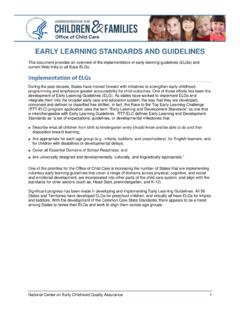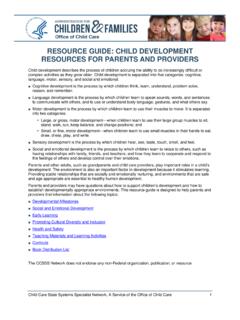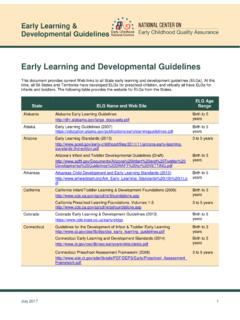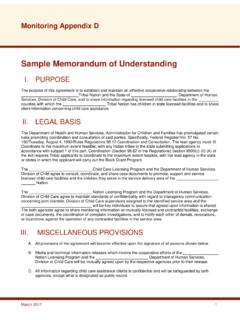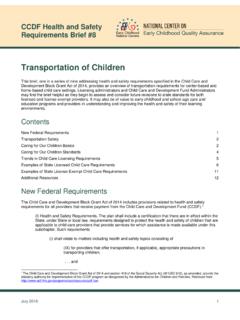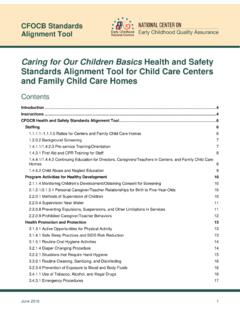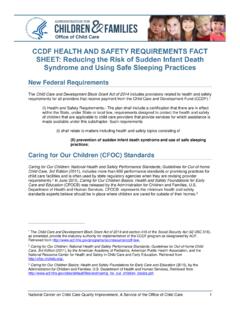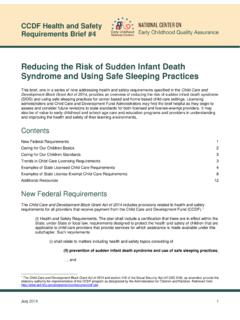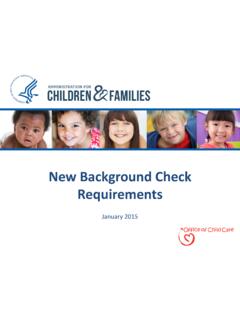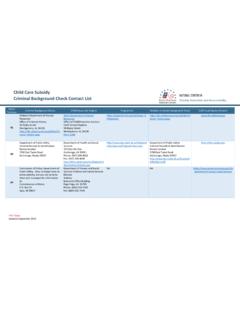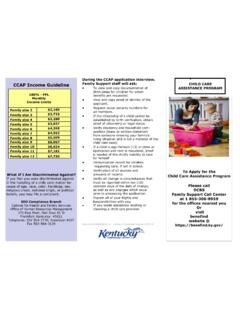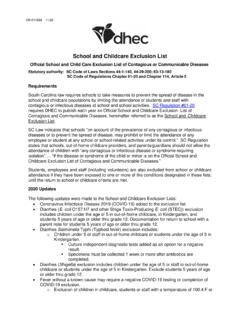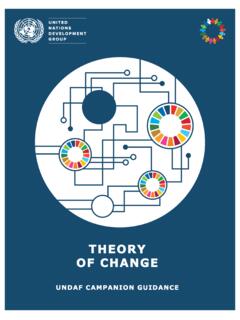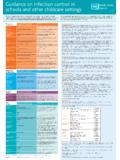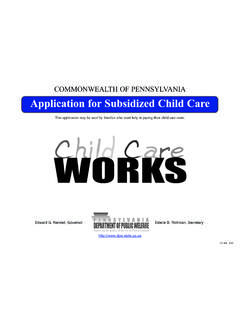Transcription of Understanding the McKinney-Vento
1 Supporting Children and Families Experiencing Homelessness for Early Childhood Professionals This resource is part of a series designed for professionals in Head Start, Early Head Start and child care, including early childhood and school-age child care providers, Child Care and Development Fund (CCDF) Lead Agency (or designated entity) staff, and other key stakeholders. Understanding the McKinney-Vento Homeless Assistance Act's Definition of Homeless . Early childhood and school-aged child care programs can provide valuable supports to children and their families that can mitigate the negative impact of homelessness. Head Start, Early Head Start, and CCDF-funded programs are required to use the definition of homeless children and youth. It is included in Section 725(2) of the McKinney-Vento Homeless Assistance Act [42 11435a(2)], and is herein after referred to as the McKinney-Vento Act's definition.. Other federally-funded agencies and programs for children, youth, and their families also use this definition of homelessness.
2 This includes state and local educational agencies (SEAs and LEAs) and programs and providers funded under Parts B and C of the Individuals with Disabilities Education Act (IDEA). Why the McKinney-Vento Act's Definition of Homeless Matters It is important to understand the McKinney-Vento Act's definition of homeless as is applies to children and youth for a number of reasons. The Head Start Program Performance Standards (HSPPS) and CCDF Final Rule of 2016 both require the use of the McKinney-Vento Act's definition of homeless.. Understanding the definition will ensure that children who may be experiencing homelessness are identified and given the chance to participate in programs that offer developmental and educational supports. Families experiencing homelessness often keep their situation and circumstances hidden from friends, program staff, and others. They worry about being judged or are fearful of child welfare involvement.
3 This document was developed with funds from Grant #90HC0014 for the Department of Health and Human Services, Administration for Children and Families, Office of Head Start, and Office of Child Care, by the National Center on Parent, Family, and Community Engagement. This resource may be duplicated for noncommercial uses without permission. Understanding the Federal Definition of Homelessness Page 1. They may not realize that their current living circumstances could qualify them for additional supports. Therefore, it is important to understand the living conditions that meet the mckinney - vento Act's definition of homeless.. McKinney-Vento Act's Definition of Homeless for Children and Youth The McKinney-Vento Act's definition of homeless for children and youth reflects the reality of family homelessness today. The definition specifically includes children living in emergency shelters, motels, hotels, trailer parks, cars, parks, public spaces, or abandoned buildings, and those sharing the housing of other persons due to loss of housing, economic hardship, or a similar reason.
4 According to the McKinney-Vento Act, the term homeless children and youths refers to individuals who lack a fixed, regular, and adequate nighttime residence and includes the following four categories: 1. Children and youth who: a. share the housing of other persons due to loss of housing, economic hardship, or a similar reason;. b. are living in motels, hotels, trailer parks, or camping grounds due to the lack of alternative accommodations;. c. are living in emergency or transitional shelters; or d. are abandoned in hospitals. 2. Children and youth who have a primary nighttime residence that is a public or private place not designed for or ordinarily used as a regular sleeping accommodation for human beings. 3. Children and youth who are living in cars, parks, public spaces, abandoned buildings, substandard housing, bus or train stations, or similar settings. 4. Children of migrant or seasonal workers who qualify as homeless because they are living in circumstances described in the first three categories.
5 The McKinney-Vento Act and other federal laws do not give official definitions of a fixed, regular, and adequate nighttime residence as it pertains to children and youth experiencing homelessness. However, the following working definitions may be useful: A fixed nighttime residence is stationary, permanent, and not subject to change. A regular nighttime residence is used on a predictable, routine, or consistent basis. Understanding the Federal Definition of Homelessness Page 2. An adequate nighttime residence sufficiently meets the physical and psychological needs typically met in home Act's Definition of Homeless for Children and Youth Community programs and agencies may define homeless differently. For example, some housing agencies may use service eligibility criteria that require families to be living on the street. Others may require families to show evidence of having moved a certain number of times within several months before they qualify for aid, housing assistance, or shelter.
6 These differences related to definitions of homeless can be confusing when determining a child's eligibility for services. This is another important reason to fully understand the living conditions that meet the McKinney-Vento Act's definition of homeless.. Understanding the Federal Definition of Homelessness Page 3. Additional Resources Child Care and Development Fund Reauthorization Head Start Program Performance Standards McKinney-Vento Definition of Homeless Subtitle VII-B of the McKinney-Vento Homeless Assistance Act This resource was developed in consultation with the National Center on Child Care Subsidy Innovation and Accountability. For more information about this resource, please contact us: | 1-866-763-6481 . Understanding the Federal Definition of Homelessness Page 4.
